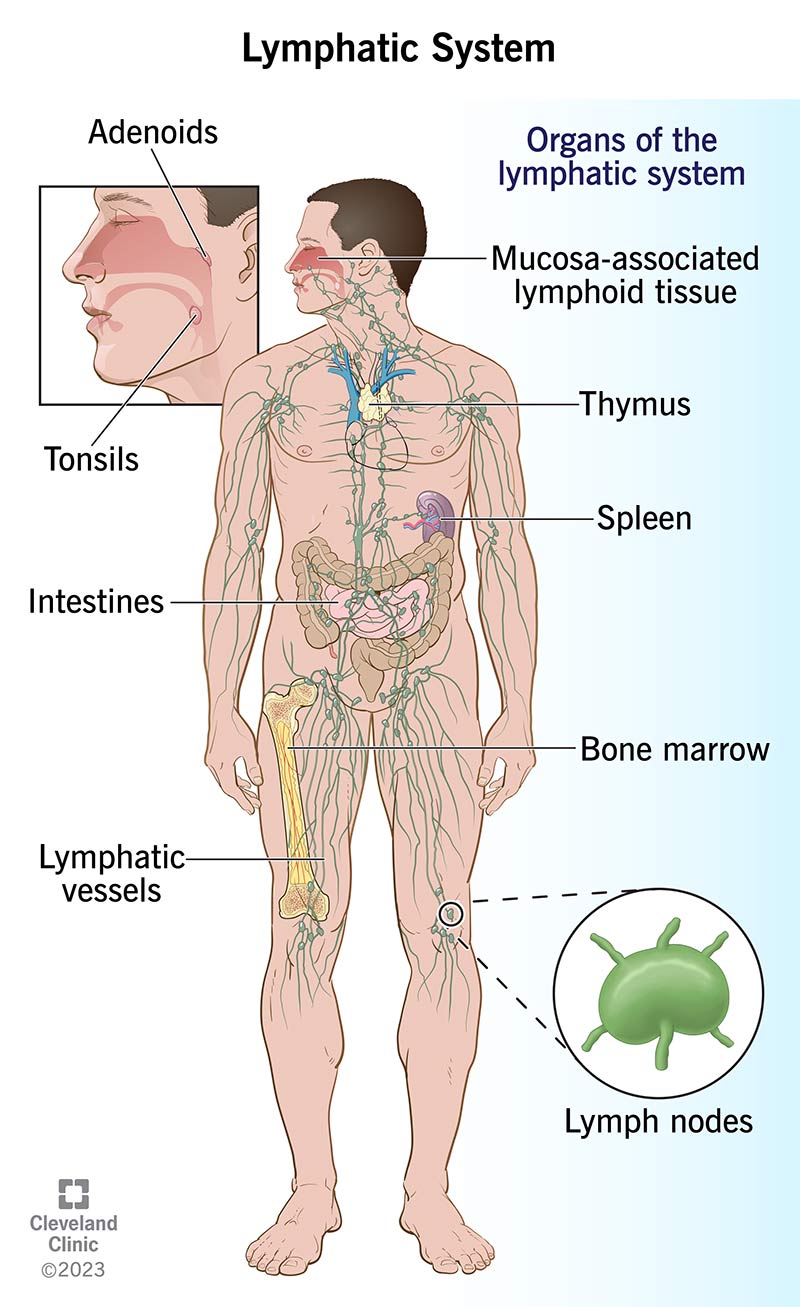Feb 4 Anatomy Continued
More on Anatomy of the Lymphatic System – here is a nice summary from the Cleveland Clinic. Learning the parts may seem a little dry and unexciting. Not to worry, we will tie in all together in a few days to make it all make sense and resonate for you as a bodyworker!
Still, it’s very important to get this covered and understood first.
Anatomy

What are the lymphatic system organs?
The organs of the lymphatic system are your:
- Bone marrow. This is the soft, spongy tissue in the center of certain bones, like your hip bone, backbones and breastbone. Your bone marrow has the vital job of making white blood cells, red blood cells and platelets.
- Thymus. This organ is located in your upper chest beneath your breastbone, and it’s most active before puberty. It’s where T-cells (a type of white blood cell) fully mature. T-cells help your body fight off invaders.
- Lymph nodes. Lymph nodes are bean-shaped glands that monitor and cleanse lymph as it filters through them. They clear out damaged cells and cancer cells. Your lymph nodes also store lymphocytes and other immune system cells that attack and destroy harmful substances like bacteria. You have about 600 lymph nodes scattered throughout your body. Some are closely connected in groups called chains. You may be able to feel some lymph nodes through your skin, in areas like your armpits, groin or neck. Others are deeper inside your body.
- Spleen. This largest lymphatic organ is located on your left side under your ribs and above your stomach. Your spleen filters your blood and removes cells that are old or not working properly. It also keeps red blood cells and platelets available in case your body needs them.
- Mucosa-associated lymphoid tissue (MALT). This mucus membrane exists throughout your body in many important locations. For example, it lines your tonsils, airways, small intestine and appendix. MALT looks for and destroys germs that could harm you.
What are the other parts of the lymphatic system?
Your lymphatic system is a big team. Other key players include your:
- Lymph. Lymph, also called lymphatic fluid, is a collection of the extra fluid that drains from cells and tissues in your body and isn’t reabsorbed into your capillaries. Lymph contains many different substances, including proteins, minerals, fats, damaged cells, cancer cells and germs. Lymph also transports infection-fighting white blood cells (lymphocytes).
- Lymphatic vessels. Lymphatic vessels are tubes that form a complex network throughout your body. The smallest tubes are lymphatic capillaries, which ultimately connect to larger tubes that lead to two main ducts in your upper chest. The pulsing of nearby arteries and squeezing of nearby muscles help fluid move through your lymphatic vessels. These vessels contain one-way valves that keep lymph moving the right way.
- Collecting ducts. Two main ducts in your upper chest empty lymph into your subclavian veins. These are your right lymphatic duct and thoracic duct. These ducts are like highway on-ramps or merging points where lymph rejoins your bloodstream.
- Tonsils and adenoids. These structures trap pathogens from the food you eat and the air you take in. They’re part of your body’s first line of defense against invaders. Your tonsils are in the back of your throat. Your adenoids are just behind your nasal cavity but are only active during childhood.
I recommended Medical Massage for anyone specializing in Lymphatic Massage or wanting to interact more effectively with doctors and other medial professionals.

